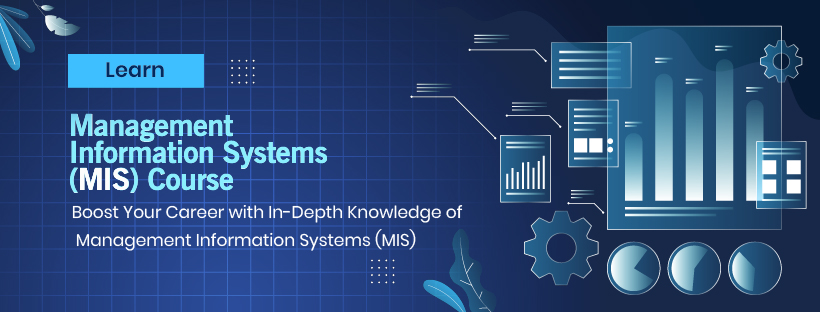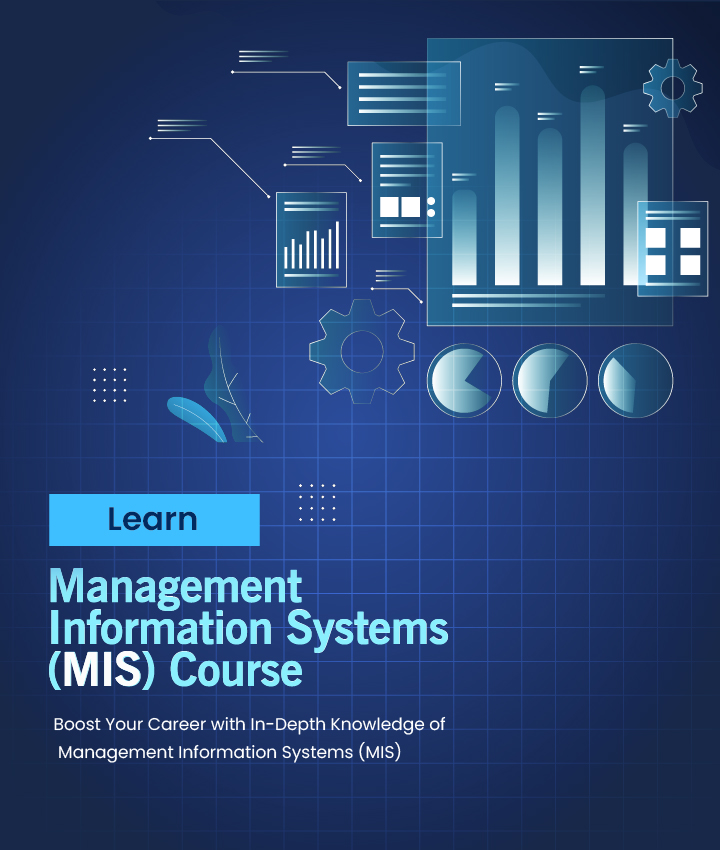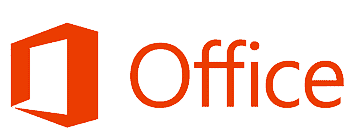


The essential course on management information systems (MIS) states the following: It prepares you thoroughly on how management information systems put support into business decision making and data management, reporting, automation, and analytics. Extensive topics become the course component- databases, SQL, business intelligence, Excel automation, data visualization, PowerPoint presentations, Google Sheets, and Microsoft Outlook. Case studies, including a capstone project, are on hand for application development in real-world MIS solutions.
Course Highlights
1. |
Advance Excel |
2. |
Power BI |
3. |
SQL |
4. |
Course intro |
5. |
Google sheet |
6. |
10 Assignment |
7. |
5 Live Project |
8. |
80 Hours |


Learning Outcome
| • | Grasp the principles of management information system and its application in business decision making. |
| • | Become experts in database management, SQL, or data extraction methods. |
| • | Become professional in BI, data visualization, and reporting tools such as Power BI and Tableau. |
| • | Advanced Excel functions, VBA automation, and Power Query. | Read More |
| • | Read Google Sheets for data analysis and automation. |
| • | Refine presentations with interactive elements in PowerPoint. |
| • | Automatable reporting and emailing using Microsoft Outlook. |
| • | Getting down-to-earth with real-life MIS problems using case studies and a capstone project. | Read Less |
Software that you will learn in this course


.png)
.png)

Course Content
| • | Importance of MIS in Business Decision-Making |
| • | Role and Responsibilities of an MIS Analyst |
| • | Types of IS (TPS, DSS, EIS, ERP) |
| 1. | Introduction to Data Management |
| 2. | Data Types:Relational vs. NoSQL Databases |
| 3. | DBMS - MySql |
| • | SELECT, INSERT, UPDATE, DELETE |
| • | Joins, Subqueries, Aggregate Functions |
| • | Views and Indexes |
| • | Basic Concepts of Business Intelligence |
| • | Reporting rather than Dashboards |
| • | Tools for Data Visualization (Power BI, Tableau, Excel) |
| • | Building Interactive Reports and Dashboards |
| • | Data Storytelling Techniques |
| • | Anything beyond the Basic Excel Functions, like VLOOKUP, HLOOKUP, INDEX-MATCH? |
| • | Then there are Pivot Tables and Pivot Charts! |
| • | So forget about Conditional Formatting and Data Validation. |
| • | Some Automate thru Macros/VBA |
| • | Power Query-or-to be- Power Pivot might work. |
| • | Introduction to Data Analysis |
| • | Descriptive, Diagnostic, Predictive & Prescriptive Analytics |
| • | Some Key Performance Indicators (KPIs) and Metrics |
| • | Trend Analysis and Forecasting |
| • | Make sure that your automating reports would consist of all of Excel |
| • | Power BI, and SQL. |
| • | Schedule Reports, Alerts |
| • | Automate Data Extraction with Python & SQL |
| • | Email Automation and Report (Outlook and Google Sheets) |
| • | Inaugural Session on Google Sheets |
| • | Fundamental Functions (Min, Max, Count, Countif, Sum, etc.) |
| • | Data Formatting and Customization |
| • | Sorting and Filtering |
| • | Advanced Formulas (Lookup Formulas) |
| • | Visualization |
| • | Introduction to Interface |
| • | Layouts and Basic Design of Slides |
| • | Templates and Themes Usage |
| • | Charts, Graphs, and Diagrams |
| • | Embedding Excel Data and Multimedia |
| • | Interactive Menus, Hyperlinks, and Action Buttons |
| • | Narrative Structure |
| • | Story versus Data |
| • | Animation and Transition Effective Use |
| • | Customizing for Different Audiences |
| • | Delivery Techniques and Q&A Handling |
| • | Real-life Presentation Examples |
| • | Hands-on Creation of Interactive Presentation |
| • | An introduction to Outlook and email management |
| • | An introduction to the Outlook interface |
| • | Constituents of customizing Outlook for productivity |
| • | Email composition and etiquette |
| • | Rules and filters for organizing email |
| • | Email templates and signatures |
| • | Being an organizer for meetings |
| • | Recurring events and reminders |
| • | Using Outlook for Task Management |
| • | Outlook and Excel and Power BI in conjunction for automatic reporting |
| • | Integrate with Microsoft Teams & OneDrive |
| • | Use Power Automate to automate emailing |
| • | Email security & protection against phishing |
| • | Managing permissions & Delegations |
| • | Best practices for interaction in the professional world |
| • | Build an MIS dashboard |
| • | Set up an automated reporting system |
| • | Deploy a business intelligence solution |
Jobs and Career Opportunities in Forex Trading
Undoubtedly, the skills obtained from technical trading in Forex may help in opening up a large array of career opportunities. Here are some roles one may opt to pursue in the Forex business.
| Job profile After completing this course |
Average salary ( 1+ year experience) |
|---|---|
| MIS Analyst | 3L-5L |
| Business Intelligence Analyst | 3L- 10L |
| Data Analyst | 4L- 8L |
| Reporting Analyst | 5L- 7L |
| Database Administrator | 3L- 9L |
| Excel and Automation Specialist | 3L- 6L |

Backup Class

Flexible Timing

Fees Installment

Expert Trainer

100% job assistance

Free Library
.webp)
Live Project
.webp)
Practical learning
As a business student, Management Information Systems was a game-changer. It helped me understand how technology supports and drives modern businesses. The real-world examples and case studies made the concepts easier to grasp. Some chapters were a bit dense, especially the technical ones, but overall, it gave me a strong foundation in how systems like ERPs and CRMs work in real life.
Hi, This book is an excellent resource for anyone in the corporate world. It provides a comprehensive look at how information systems integrate with business strategy and operations. As someone working in IT consulting, I appreciated the detailed breakdowns of data management, decision support systems, and cloud computing. It’s well-organized and practical, making it easy to apply what you learn to real projects.

I've used Management Information Systems as a textbook in my undergrad classes for years. It strikes a good balance between theory and practical application. The chapters are structured logically, with strong learning objectives and engaging end-of-chapter activities. However, I would love to see more updates related to emerging tech like AI and blockchain in future editions.

0k +

0k +

0+
.webp)
0+
Frequently Asked Questions
IFDA believes in offering assistance to its students. Therefore we aid our outperforming students with in-house internships. Students with determination and hard work can also earn an internship from the collaborating companies of IFDA.
We believe that school education is the prime experience, and a student should focus solely on it during their school life. However, if you have the ability to juggle your school hours and training hours we will offer you flexible schedules.
Most MIS programs do not have specific entry requirements. Nevertheless, a background in business, information technology, or similar areas may prove beneficial.
This course duration is 3 Months.
The salary range for a business analyst depends on multiple factors, such as experience, location, and industry. The median income of business analysts ranges from 6.8LPA to 8LPA annually, while experienced practitioners can command much more (between 6.10LPA and 12LPA).
Begin by enrolling in a MIS Course to learn the required skills. Then, seek starting-level positions in organizations that match your career aspirations. Additionally, networking events and internships may also be helpful for opening doors.
.png)
 (1).png)
 (1).png)
 (1).png)
 (1).png)
 (1).png)


Get free counselling by our experience counsellors. We offer you free demo & trial classes to evaluate your eligibilty for the course.
Have you
Any question
Or need some help?
Please fill out the form below with your enquiry, and we will respond you as soon as possible.